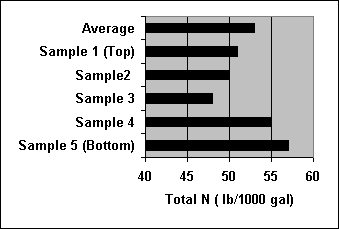1087 Jamison Rd
Washington Court House, OH 43160
(800) 321-1562

Managing manure for optimum economic crop production with minimum environmental impact requires a knowledge of the manure's nutrient content. While standardized or “book” values listing average nutrient contents of manure are available, they are of little value to an individual farmer because of large variation among different manure storage and handling systems. Thus, regular manure analysis is recommended for the accurate determination and optimum management of manure nutrients.
Because the nutrient content of manure often varies within a manure storage it is recommended that, at least once, several samples be collected as the storage is emptied. These samples could be collected once every so many loads or when there are obvious changes in the consistency of the manure. The objective is to get an indication of the variation in nutrient content that occurs and use this to adjust management. For example, in liquid storages there is often a “sludge” layer near the bottom that is difficult to agitate and is thus very different in nutrient content and even availability. With knowledge of this difference, rates could be adjusted in the future when this material is spread.
Research conducted at Penn State University by Doug Beegle shows the total N from different depths of a liquid manure storage facility are shown in Figure 1.

Figure 1. An example of N variability often found in liquid manure storage systems.
Spectrum Analytic offers several manure analysis packages plus additional individual analyses to meet your special needs.